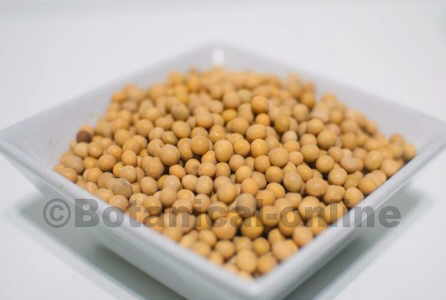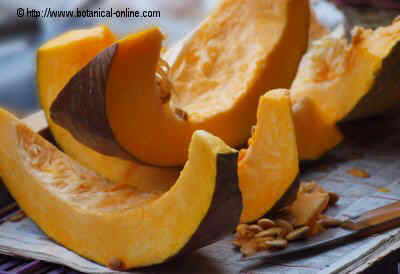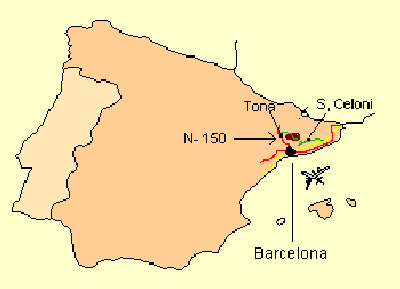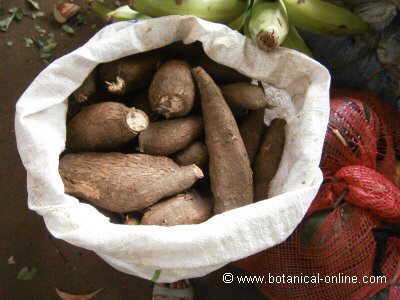Contents
- 1 Absorption of soy isoflavones and intestinal microbiota
- 1.1 What are isoflavones and how important is the microbiota?
- 1.2 Why is intestinal flora so important for isoflavones absorption?
- 1.3 Absorption and metabolism of isoflavones by the microbiota
- 1.4 Eating soy usually increases the intestinal capacity to metabolize isoflavones
- 1.5 Fermented soybeans, greater absorption of isoflavones
- 1.6 Equol: anticancer component derived from intestinal daizdein
- 1.7 Soy has different effects according to each person
- 1.8 How are isoflavones removed from the boy?
Absorption of soy isoflavones and intestinal microbiota
What are isoflavones and how important is the microbiota?
Soy isoflavones are plant substances that in the body have functions similar to the body’s estrogen hormones, which is why they are also known as phytoestrogens. The main soy isoflavones are genistein, daidzein and glycytein.
Why is intestinal flora so important for isoflavones absorption?

The effect of isoflavones is closely related to the state of the intestinal microbiota, because it is necessary that isoflavones be transformed so that they can be absorbed and have an effect on the body.
Eating soy usually increases intestinal bacteria capable of metabolizing isoflavones.
For this reason for menopause, regular consumption of soy is recommended, because sporadic consumption may not be effective.
Absorption and metabolism of isoflavones by the microbiota
The absorption of soy isoflavones is conditioned by the state of the microbiota or intestinal flora, which converts isoflavones in their form of glycosides to aglycones, being the later more assimilable:
Soy isoflavones are found in the food in the form of glycosides. To be absorbed, they must be transformed into aglycones and carbohydrates through the action of the intestinal microbiota (by the enzyme beta-glucosidase). After this process, isoflavones are in the form of aglycones, which are smaller and assimilable lipophilic compounds.
Eating soy usually increases the intestinal capacity to metabolize isoflavones
Eating soy usually increases the intestinal capacity to metabolize isoflavones and therefore improve their bioavailability.
It seems that the usual consumption of soy increases the activity of beta-glucosidases enzymes responsible for converting isoflavones glycosides into aglycones (active compounds).
Therefore, to obtain the benefits of soy, this should be consumed regularly in the diet. Taking soy sporadically will surely not be effective in obtaining the benefits of your isoflavones.
Fermented soybeans, greater absorption of isoflavones

There are two special cases in which this transformation of isoflavones by the intestinal flora is not necessary:
- In fermented soy foods; (miso, tempeh, tamari). During the fermentation of soy derivatives, isoflavones have been transformed into aglycones and are already absorbable.
- In supplements with isoflavones they are in the form of aglycones, are very concentrated, and are more bioavailable because there is no fiber or nutrients that can interfere with their absorption.
In both cases, isoflavones are absorbed directly (they are more bioavailable) without having to be metabolized by the intestinal flora to assimilate.
* Related information: Differences between fermented and non-fermented soy products
Equol: anticancer component derived from intestinal daizdein
An isoflavone derivative that has aroused much interest is equol, a substance related to breast cancer prevention. It has been observed that a certain type of intestinal microbiota is capable of producing equol from isoflavone daizdein. This component has anticancer properties that are the subject of many studies especially against breast cancer.
For example, there are currently investigations aimed at finding probiotics that perform this process of transforming isoflavones into derivatives such as equol to increase the possible effect of these substances.
Soy has different effects according to each person

The necessary transformation of isoflavones by the intestinal microbiota or flora shows that the assimilation of these components may be different between different individuals depending on the composition of their intestinal microbiota. As mentioned, these absorption differences would not occur in the case of isoflavone supplements in the form of aglycones or in fermented soy products.
Occasionally studies with soy isoflavones show controversial results, for example among Asian and Western populations, for which different results are given.
One possible explanation for this fact seems to be the intestinal microbiota difference. It could be that the Orientals had a greater capacity to transform isoflavones at the intestinal level due to the tradition of consumption of this legume, which is only found in western food occasionally or temporarily.
However, the transformation capacity of soy isoflavones by the microbiota remains a pending field for further research.
How are isoflavones removed from the boy?
Isoflavones that are not absorbed are excreted in the feces. Those that are absorbed are transported through the blood and subsequently eliminated by bile and urine.
When isoflavones are expelled by bile, they can be reabsorbed again (this process is known as enterohepatic circulation), unless the microbiota inactivates them by transforming them into other substances that would be excreted.
Therefore, in the enterohepatic circulation there is another point where the type of microbiota and the state of the intestine modifies the absorption of isoflavones.
![]() More information on isoflavones
More information on isoflavones








